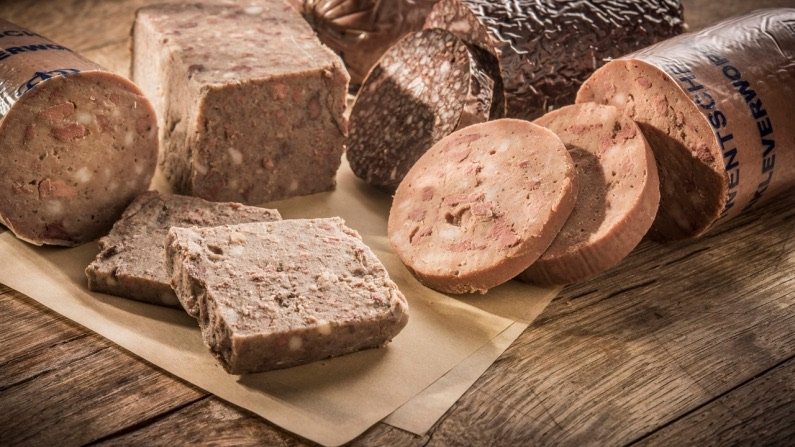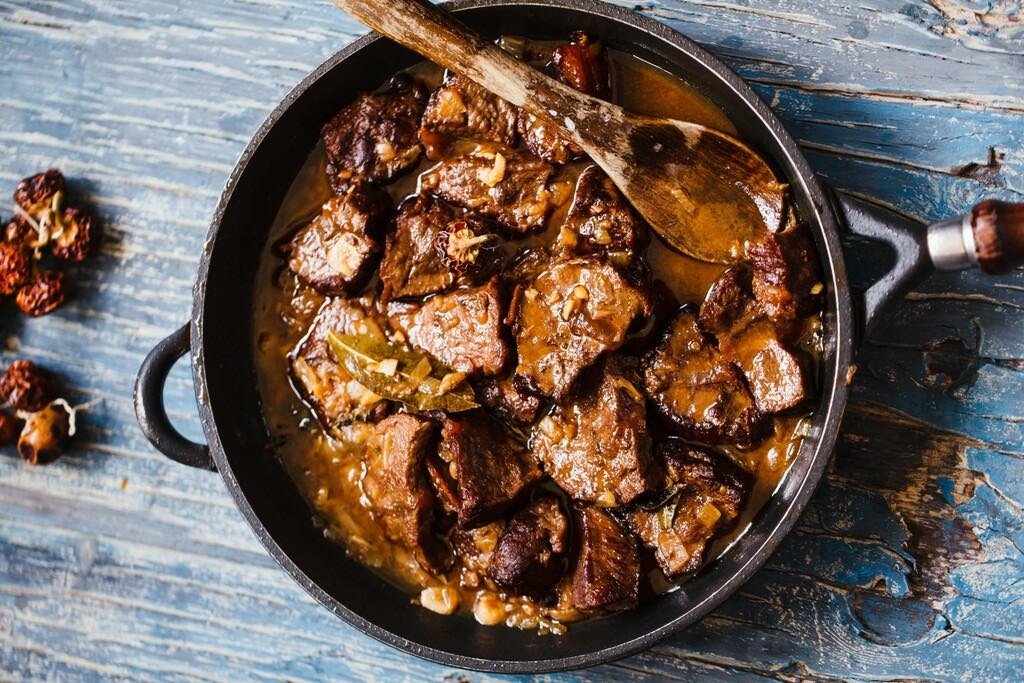French vs. Dutch Cuisine: A Culinary Comparison
When it comes to culinary delights, both French and Dutch cuisines offer unique flavours and traditional dishes that reflect their rich cultural heritage. Let's embark on a culinary journey to discover the differences and similarities between these two fascinating cuisines.
Spoiler alert: you might get hungry!
French Cuisine: A Symphony of Flavours
French cuisine is like a symphony orchestra, where each dish plays its part in a harmonious blend of flavours. From the buttery croissants of Paris to the aromatic bouillabaisse of Provence, French dishes are a testament to the country's love for food—and perhaps a little obsession with butter. Known for its meticulous preparation and artistic presentation, French cuisine emphasizes fresh, high-quality ingredients. Traditional dishes like coq au vin, ratatouille, and crème brûlée showcase the culinary prowess that has earned France its gastronomic fame. The diversity of local gourmet heritage across regions, from the truffles of Périgord to the wines of Bordeaux, adds layers of unique flavors to the French culinary landscape. It's like a gourmet treasure hunt, but with more cheese!
A Culinary Comparison
French and Dutch cuisines, while distinct in their origins and techniques, have shared much over the centuries. From historical trade routes to close geographical proximity, both nations have influenced each other in a delicious dance of flavor, technique, and ingredients. The similarities and differences between French and Dutch culinary traditions offer a fascinating look at how cultures evolve through food. Let's dive into some key dishes and ingredients that show how these two cuisines have borrowed from one another.
Pâté vs. Leberkaas: A Tale of Two Meat Traditions
Both the French and Dutch have a long history of making rich, flavourful meat dishes, including cured meats, sausages, and pâtés. Over time, their culinary traditions have influenced each other in subtle ways.
French Influence on Dutch Meat Dishes:
The French are known for their refined charcuterie, including pâté, rillettes, and terrines. These techniques made their way to the Netherlands, inspiring Dutch chefs to create their own variations. While Dutch cuisine tends to favor simpler, heartier meat dishes, you can find Dutch takes on pâté-style spreads, often made with liver or game meats, similar to the rustic French rillettes.
For example, in certain parts of the Netherlands, leverpastei (Dutch liver pâté) is a common sandwich spread, resembling the smooth and buttery consistency of French pâté but with a milder spice profile.
Dutch Influence on French Meat Dishes:
On the other hand, the Dutch have long been influenced by German and Central European meat traditions, which have, in some cases, made their way into French cuisine. A notable example is leberkaas (closely related to Dutch bakleverworst or "baked liver sausage"), which is a finely ground, oven-baked meatloaf that resembles a firm pâté. While leberkaas didn’t spread in all of France, similar sausage-based meatloafs have found a place in regional French cuisines, particularly in Alsace, which has both French and German culinary roots.
Another example is the use of Dutch-style smoked sausages, such as rookworst, which have influenced the seasoning and smoking techniques used in certain French regional charcuterie, particularly in northern France, where the borders between the two culinary worlds have blurred over time.
The Dutch Bolus
The Art of Stews: Coq au Vin vs. Dutch Stoofvlees
Stews have been a staple in both Dutch and French cuisines for centuries, and both countries have their own interpretation of this hearty dish.
The French dish "coq au vin," a slow-cooked chicken stew made with wine, vegetables, and mushrooms, was historically adapted by the Dutch to include more local ingredients like beef and darker beer, creating their version of the stew: "stoofvlees."
On the flip side, Dutch recipes like stoofvlees (a beef stew made with beer) found their way into the French culinary scene, where French chefs experimented with incorporating beer into slow-cooked meat dishes. This resulted in a blend of French technique with Dutch ingredients like dark ale.
French Tarte Tatin
Croquettes: A Crispy Culinary Exchange
Croquettes are a beloved snack in both French and Dutch cuisines, but their evolution in each country has taken unique paths while still sharing a common origin.
The croquette, as we know it today, traces its roots back to 17th-century France, where chef François Massialot first described a dish of small, breaded, and fried morsels filled with a creamy meat-based filling. French croquettes, often made with potatoes, cheese, or béchamel-bound fillings, became popular as appetisers in aristocratic kitchens.
This concept was later adapted by the Dutch, who developed their own version: the kroket. Unlike the French croquette, which often uses mashed potatoes or a velvety béchamel, Dutch kroketten typically feature a thick ragout-style filling made from slow-cooked meat, bound with a flour-based roux.
The Dutch Classic - Bitterballen
While France and the Netherlands may seem worlds apart in their culinary reputations—one famed for haute cuisine, the other for hearty, no-nonsense meals—both share a deep respect for freshness, local ingredients, and the land that nourishes them. Their traditional dishes have been shaped by geography, climate, and seasonal harvests, creating distinct yet occasionally overlapping flavours.
From slow-cooked meats to seafood specialties, these two food cultures have influenced each other in subtle ways. Whether through shared preservation techniques or a love of rich, comforting flavours, their cuisines remind us that the best dishes aren’t just about technique—they’re about respect for what the land provides and a love of good food, whether refined or rustic.
Bon appétit or eet smakelijk—whichever you fancy!
Dutch Cuisine: Simple Yet Satisfying
In contrast, Dutch cuisine is like your favourite pair of comfy slippers—simple, hearty, and always satisfying. Rooted in agricultural traditions, and seasonality, Dutch dishes often feature locally-sourced ingredients such as potatoes, cheese, and seafood. Traditional meals like stamppot, erwtensoep (pea soup), and herring highlight the Dutch preference for comfort food that's both nourishing and flavourful. While it may not have the same global reputation as French cuisine, Dutch food holds a special place in the hearts of its people—and in their stomachs.
Cheese: A Shared Love for Dairy
Both the French and Dutch have long traditions of cheese-making, and it’s no surprise that these countries have influenced each other when it comes to creating beloved cheeses.
The Netherlands is famous for its Gouda and Edam cheeses, but did you know that these cheese-making traditions were heavily influenced by French techniques? In the 17th century, French settlers introduced methods for aging and flavouring cheese that influenced the Dutch, particularly in the southern provinces.
In return, Dutch cheeses such as Edam were also enjoyed by the French, particularly during the Renaissance period. A classic example is the use of Dutch cheeses in French recipes like "tartiflette" (a cheesy potato dish) and “croque monsieur” (a popular French sandwich).
Dutch Bakleverworst
The Rise of the Croissant and the Dutch Bolus: A Sweet Pastry Comparison
When it comes to pastries, the French are undoubtedly famous for their croissants, which have gained worldwide popularity. Interestingly, however interestingly there are records showing that the Dutch were making flaky, buttery pastries long before the croissant became widespread in France. The Dutch "bolus", a cinnamon-sugar coated pastry, is a sweet, twisted dough that has been compared to the croissant for its similar texture and sweetness, albeit with a distinct flavor profile due to the use of cinnamon.
The classic French croissant, with its signature buttery layers, has been adapted across Europe. In the Netherlands, bakeries have added their twist by including fillings like chocolate, almond paste, or custard, combining Dutch pastry traditions with French refinement.
Dutch Stoofvlees
Apples: French Tarte Tatin Meets Dutch Appeltaart
Apple desserts are beloved in both France and the Netherlands, and their respective takes on apple pies reflect each country's culinary style.
The famous French Tarte Tatin, an upside-down caramelized apple pie, has inspired many Dutch bakers to add a similar technique to their beloved Appeltaart (apple pie). The French use butter and sugar to create a caramelized apple base, while Dutch recipes often feature a more traditional apple pie filling with cinnamon and nutmeg.
Dutch apple pies have made their way into French bistros, where chefs sometimes use a bit of rum or dark beer to add depth to the flavour profile. The apples used in Dutch appeltaart are often firmer and less sweet, offering a unique contrast to the French tarte tatin’s rich caramelization.
French Croquettes with potato and cheese
Dutch Influence on French Croquettes
While the Dutch kroket is now a national staple, sold in snack bars and even vending machines, its concept has traveled back to France in different forms. In some regions of France, particularly in brasseries and casual dining spots, croquettes de viande (meat croquettes) have been influenced by the Dutch approach, incorporating more savory, shredded meat fillings rather than just the traditional potato-based mixture.
Additionally, the bitterbal, a smaller, round version of the Dutch kroket, has inspired variations in French cuisine. Some French chefs have experimented with making bite-sized croquettes with fillings similar to bitterballen but using French cheeses, herbs, or even seafood.












